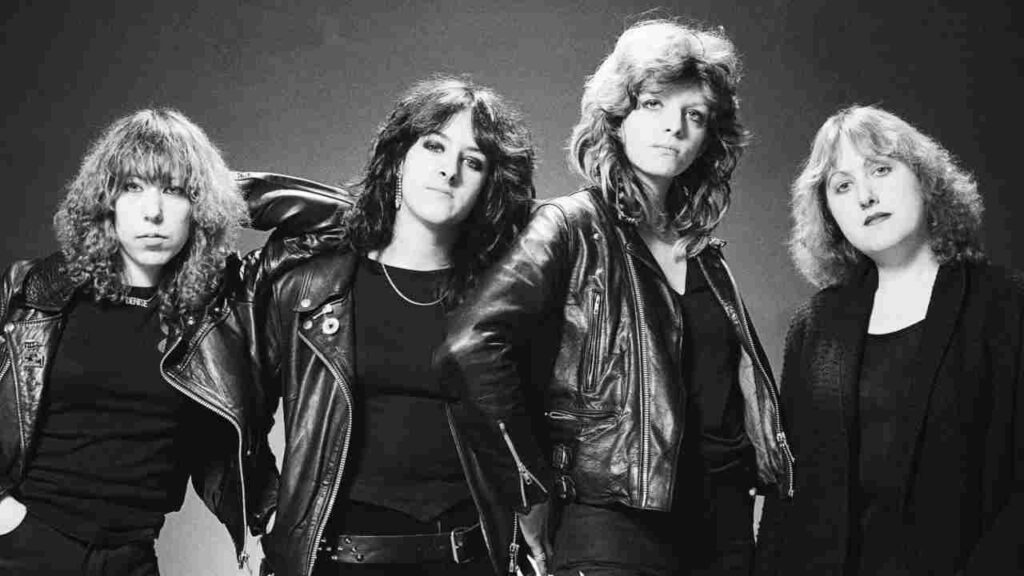In the labyrinth of musical genres, few are as entrancing, evocative, and kaleidoscopic as psychedelic rock. Emerging from the countercultural ferment of the 1960s, this genre is the aural equivalent of a mind-expanding journey—a sonic voyage that bends reality, warps time, and dissolves the boundaries between the mundane and the mystical. With its swirling guitars, lush soundscapes, and esoteric lyrics, psychedelic rock invites the listener to traverse the inner realms of consciousness and explore the outer limits of sound.
But where does one begin this technicolor expedition? The world of psychedelic rock is vast, a sprawling cosmic garden where the seeds of countless bands have blossomed into vibrant musical flora. To help guide your journey, I present to you three seminal bands—each a beacon in the psychedelic firmament, each a master of their own idiosyncratic sonic alchemy. These bands are not just entry points into the genre; they are conduits to the very heart of the psychedelic experience.

1. Pink Floyd: The Architects of Soundscapes
If there is a band that epitomizes the essence of psychedelic rock, it is Pink Floyd. Formed in London in 1965, Pink Floyd began as a group steeped in the experimental ethos of the British underground scene. Under the leadership of Syd Barrett, their early work was a wild, free-form exploration of sound—a chaotic yet captivating amalgam of surreal lyrics, dissonant melodies, and unconventional song structures. Their debut album, The Piper at the Gates of Dawn (1967), is a cornerstone of psychedelic rock, a kaleidoscopic tapestry of sonic textures and whimsical narratives.
However, it was the departure of Barrett and the subsequent arrival of David Gilmour that marked the band’s evolution into something truly monumental. With Gilmour’s soaring guitar work and Roger Waters’ profound lyrical introspections, Pink Floyd crafted a series of albums that transcended mere music to become immersive experiences.

Take The Dark Side of the Moon (1973), for instance. This album is not just a collection of songs but a continuous piece of music, a concept album that explores themes of madness, mortality, and the human condition. The seamless transitions between tracks, the meticulous production, and the innovative use of sound effects create an enveloping auditory journey. Tracks like “Time,” with its haunting ticking clocks and existential lyrics, and “The Great Gig in the Sky,” with its ethereal vocal performance by Clare Torry, showcase the band’s mastery of creating mood and atmosphere.
Their magnum opus, Wish You Were Here (1975), further cements their place as the architects of soundscapes. The album’s centerpiece, “Shine On You Crazy Diamond,” is a sprawling, multi-part suite that pays tribute to Syd Barrett. The track is a masterpiece of gradual build-up, where Gilmour’s plaintive guitar, Wright’s shimmering keyboards, and Waters’ poignant lyrics coalesce into a transcendent experience.
In essence, Pink Floyd’s music is a journey—one that takes the listener through the dark recesses of the mind and out into the vast expanse of the cosmos. Their ability to fuse philosophical depth with sonic innovation makes them essential for anyone delving into the world of psychedelic rock.

2. The Grateful Dead: The Psychedelic Tapestry of Americana
If Pink Floyd represents the cerebral and the cosmic, The Grateful Dead embodies the communal and the organic. Formed in the crucible of the San Francisco counterculture in 1965, The Grateful Dead were more than just a band; they were the nucleus of a movement, the sonic shamans of a generation seeking enlightenment through music, mind-altering substances, and communal experience.
The Dead’s music is a rich tapestry woven from the threads of rock, blues, country, and jazz, all imbued with a distinctly psychedelic sensibility. Their live performances were legendary—freewheeling, improvisational journeys that could stretch a single song into a 30-minute odyssey. This spirit of improvisation, of living in the moment and embracing the unknown, is the essence of The Grateful Dead’s appeal.
One of the most accessible entry points into The Grateful Dead’s vast discography is their 1970 album American Beauty. This album is a distilled essence of the band’s ethos—a harmonious blend of folk-rock melodies, lush vocal harmonies, and lyrics steeped in Americana and mysticism. Tracks like “Ripple,” with its timeless, Zen-like wisdom, and “Truckin’,” with its rollicking, road-weary optimism, are quintessential Dead songs. The latter’s refrain, “What a long, strange trip it’s been,” has become an anthem for the psychedelic journey itself.

However, to truly understand The Grateful Dead, one must experience their live recordings. The Live/Dead album (1969) is a perfect starting point. The 23-minute version of “Dark Star” on this album is a masterclass in psychedelic improvisation, a piece of music that unfolds like a journey through inner and outer space. The band’s ability to communicate and improvise together, creating music that is both spontaneous and transcendent, is unparalleled.
The Grateful Dead’s legacy is not just their music but the community they fostered—the Deadheads, a devoted tribe of followers who traveled from show to show, creating a nomadic subculture that thrived on the band’s music, ethos, and the shared experience of live performance. To this day, The Grateful Dead’s music continues to inspire new generations of listeners and musicians, serving as a testament to the enduring power of communal, improvisational music.

3. Tame Impala: The Modern Psychedelic Vanguard
While Pink Floyd and The Grateful Dead are pillars of the classic psychedelic rock canon, the genre has not remained static. Over the decades, it has evolved, absorbed new influences, and given birth to new generations of artists who have carried the psychedelic torch into the 21st century. Among these modern purveyors of the psychedelic sound, Tame Impala stands out as a band that has not only revitalized the genre but also redefined it for a new era.
Tame Impala is the brainchild of Australian multi-instrumentalist Kevin Parker, who single-handedly writes, records, and produces the band’s music. Since their debut album Innerspeaker (2010), Tame Impala has been at the forefront of a new wave of psychedelic music that blends the genre’s classic elements—trippy guitar effects, dreamlike lyrics, and lush production—with modern electronic influences and introspective themes.

Their breakthrough album, Lonerism (2012), is a kaleidoscopic journey into Parker’s psyche, where themes of isolation, alienation, and introspection are explored against a backdrop of swirling synthesizers, reverb-drenched guitars, and intricate rhythms. Tracks like “Feels Like We Only Go Backwards” and “Elephant” showcase Parker’s ability to fuse catchy melodies with deeply introspective lyrics, creating music that is both accessible and emotionally resonant.
However, it was their 2015 album Currents that truly catapulted Tame Impala into the mainstream. Currents is a sonic evolution, where Parker fully embraces electronic music, blending it seamlessly with psychedelic rock to create a sound that is both retro and futuristic. The album’s lead single, “Let It Happen,” is a sprawling, eight-minute epic that takes the listener on a journey through pulsing beats, shimmering synths, and hypnotic melodies. The album’s themes of personal growth, change, and self-acceptance resonate deeply with listeners, making it a defining record of the 2010s.
Tame Impala’s music is a bridge between the past and the future of psychedelic rock. Parker’s ability to synthesize the genre’s classic elements with contemporary sounds and themes has made Tame Impala a gateway for younger listeners to discover the world of psychedelic music. In a way, Tame Impala represents the continuing evolution of psychedelic rock—a genre that, while rooted in the counterculture of the 1960s, remains as vital and relevant as ever.
The Psychedelic Odyssey Continues
The journey into psychedelic rock is not just a foray into a musical genre; it is an exploration of consciousness, a voyage through the vast, uncharted territories of the mind and soul. Pink Floyd, The Grateful Dead, and Tame Impala each offer a unique gateway into this world, their music serving as both a map and a compass for the psychedelic explorer.
Pink Floyd’s meticulously crafted soundscapes invite you to ponder the deepest questions of existence, to lose yourself in the vastness of the universe, and to find meaning in the void. The Grateful Dead, with their improvisational spirit and communal ethos, invite you to embrace the journey, to live in the moment, and to find joy in the unpredictable twists and turns of the road. Tame Impala, with their modern sensibilities and introspective themes, invite you to reflect on the self, to navigate the complexities of the modern world, and to find beauty in the process of change and growth.
Together, these bands represent the multifaceted nature of psychedelic rock—a genre that is at once deeply personal and universally resonant, a genre that transcends time and space, and a genre that continues to inspire and captivate listeners across generations. Whether you are a seasoned psychonaut or a curious newcomer, the music of these bands offers an endless well of inspiration, a source of solace, and a gateway to new dimensions of sound and consciousness.
As you embark on your own psychedelic odyssey, remember that the journey is as important as the destination. Let the music guide you, let it take you to places you’ve never been, and let it open your mind to the infinite possibilities that lie within and beyond. For in the world of psychedelic rock, the only limits are the ones you set for yourself.
So, turn on, tune in, and drop out. The journey awaits.









